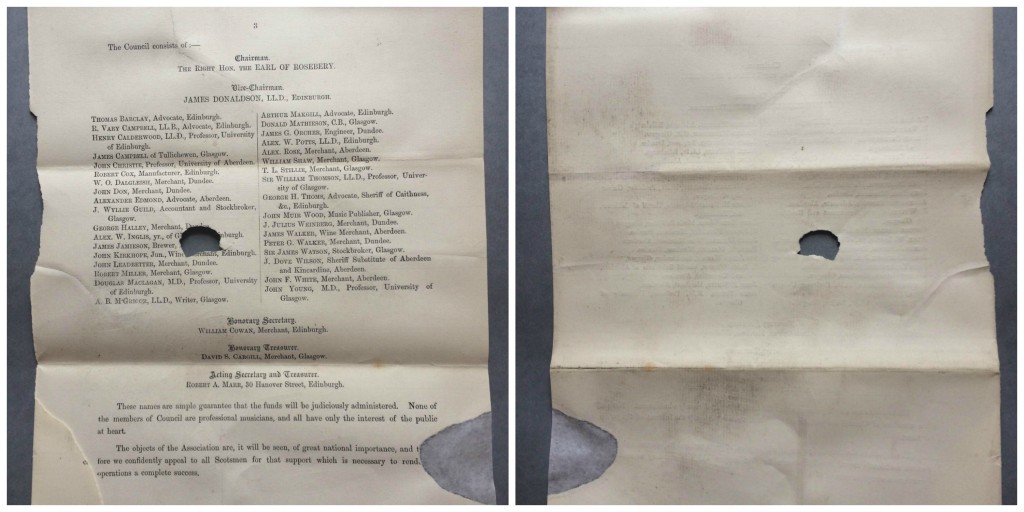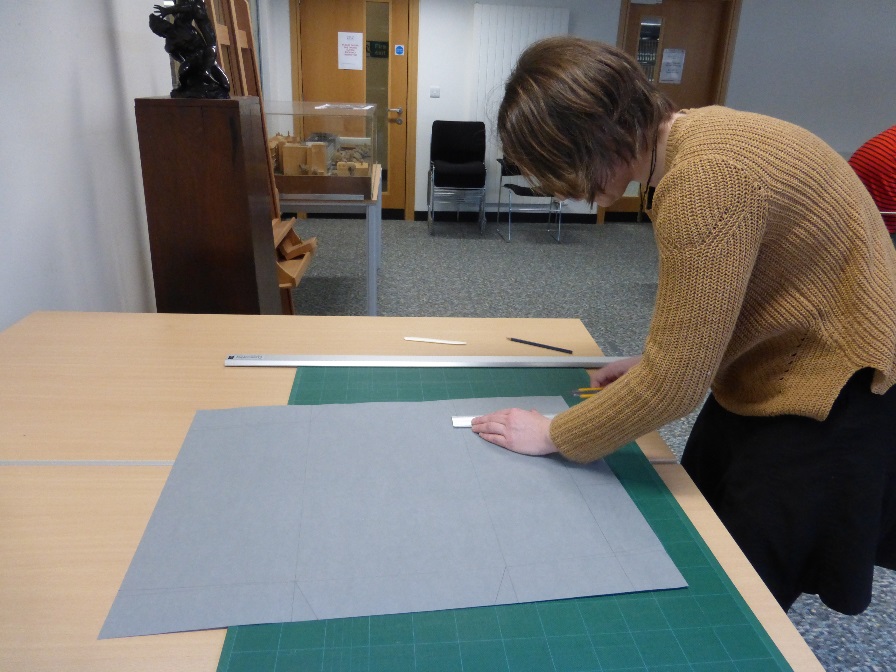In this week’s blog we hear from Anna O’Regan, who recently attended a Conservation Taster Day at the CRC. Anna discusses why she wanted to take part, and what she learnt during the day…
My educational background is in Museum Studies and Cultural Heritage. While I enjoyed studying this masters degree, I found it to be a little too broad, and although I did choose to narrow the focus to cataloguing and gained voluntary experience in this area, I felt like this wasn’t the right path for me to follow. Then I stumbled upon conservation and figured out which direction I want to proceed in. When I learned about the Conservation Taster Day at Edinburgh University I was thrilled to be invited to take part and learn more about what branches of conservation there are, so I could get the information I needed and make a decision about what precisely I want to specialise in. Having completed the day I can say with certainty that paper conservation is for me and I couldn’t be more excited for what the future holds.
The Conservation Taster Day was hosted by Special Collections Conservator, Emily Hick of the Centre for Research Collections (CRC). Alongside me were three other young women, all with different educational backgrounds but with a common interest in paper conservation. The session began with a discussion about conservation principles and ethics, which included defining the terms ‘preventive’ and ‘interventive’ conservation. I valued having these two branches of conservation defined because it helped me gain clarity about which specialism I want to pursue.
From here we moved on to surface cleaning. During this part of the session, Emily shared with us some of the techniques conservators use when cleaning the surface of an object, such as the single-page, de-accessioned documents each of us attendees had in front of us to practice on. The three techniques we got to test out were using soft animal hair brushes, Mars Staedtler erasers (both grated and cut into slithers), and chemical sponges. I had had previous experience with the brushes so I was thrilled to find out about and test out these other methods. I found the grated eraser a surprising but effective technique. The sponge technique was also effective and I liked that you could see the dirt begin to discolour both the sponge and the eraser gratings. The irreversibility of surface cleaning was stressed and Emily got us thinking about how surface dirt may provide clues about an object’s history. As such the conservator may not choose to remove too much, if any, of the surface dirt if it would decrease the value of the object or detract from its history. I appreciated having my mind opened to considering these sorts of questions before conducting any treatments and to consider the complex thought process behind conducting interventive conservation.

Participants at the Conservation Taster Day
From surface cleaning we moved onto discussing tear repair and infilling losses, such as holes or large gaps. Emily explained the reasons behind repairing tears and infilling losses, such as to stabilise the object and reduce the chance of the tears or losses getting larger, and we got to practice how to do this type of interventive treatment. Emily showed us how to repair the tears and cuts in our documents with the use of the thin and fibrous Japanese paper and wheat starch paste. It was a very intricate and delicate process which I thoroughly enjoyed testing out. After that we got to practice infilling losses in our documents. Like with tear repair, we used the Japanese paper and wheat starch paste to ‘patch up’ these areas following the same process. Once all the rips, cuts, and holes had been repaired, I enjoyed seeing my document ‘whole’ again, and I was surprised at how much the repairs blended into the document.

De-accessioned document, after treatment, with tear repair and infill – recto and verso
Towards the end of the day we were shown how to make a four flap folder, which we got to take home and house our document in, and we also discussed preventive conservation. Emily’s colleague, Katharine Richardson (Project Conservator), came by to explain her work at the CRC and what preventive conservation entails. We discussed pest control, light damage, relative humidity and other ways in which the elements can affect an objects condition.

Anna making a four flap folder
This taster day was the perfect opportunity for me to learn more about conservation and I thoroughly enjoyed myself. The thing I loved most was getting to try out these techniques and gaining a sense of what it’s really like to be a paper conservator. I am grateful to have been able to attend because it has helped me find clarity over which direction I want my career to head in. I would definitely recommend this Taster Day to any prospective student or simply anyone wanting to find out more about interventive and preventive conservation. I would like to thank both Emily Hick and Serena Fredrick for inviting me to take part in this invaluable day.
Anna O’Regan
Conservation Volunteer
